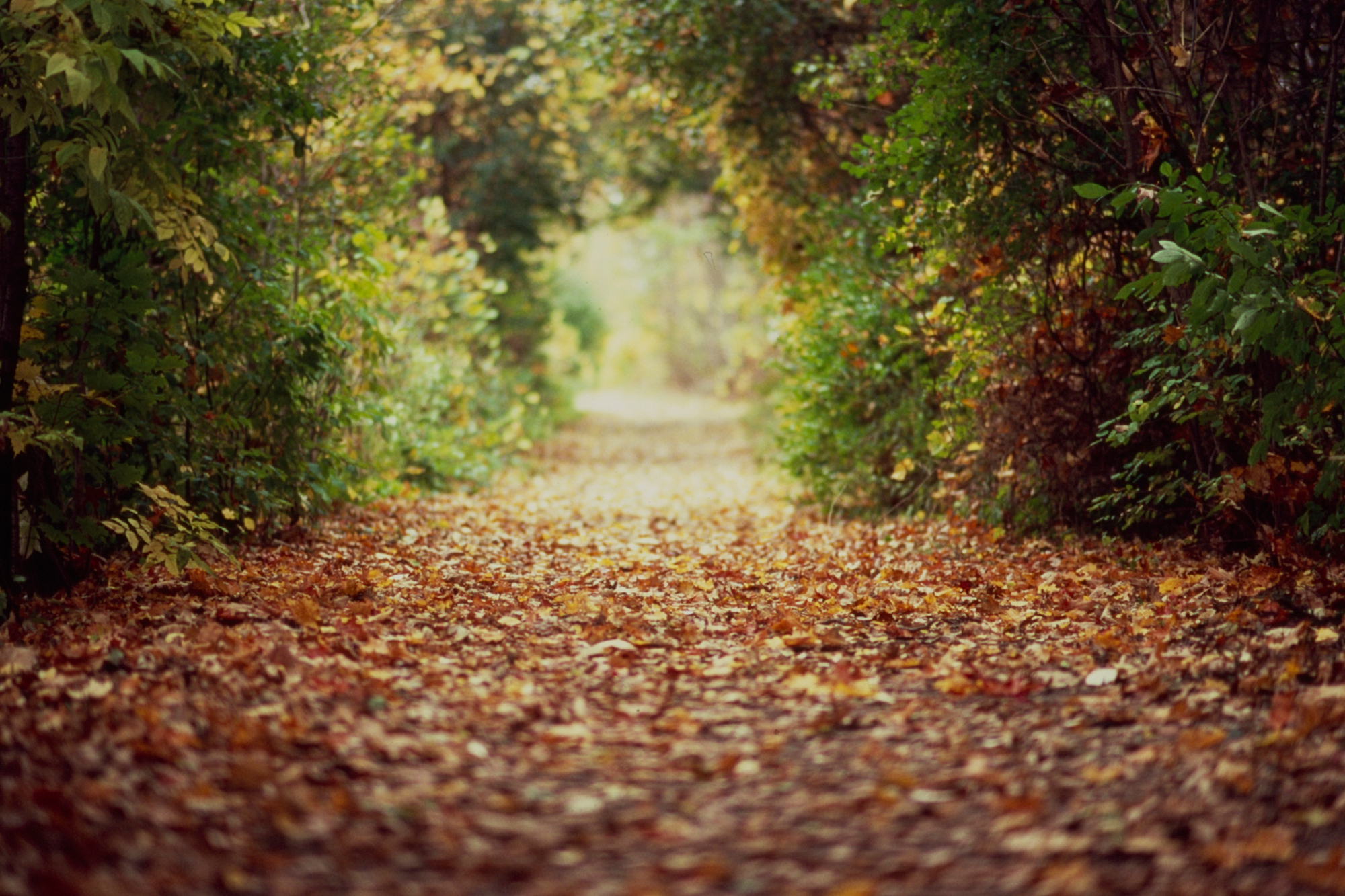There’s something magical about documenting the fall season through photography where I live. The Southern Ontario area together with the the northeastern region of North America’s crisp mornings, golden afternoons, and blazing foliage create the kind of drama that feels tailor-made for film. Every year I find myself reaching for my cameras as soon as the first leaves start to turn, knowing I’ll never quite capture the season the same way twice. If you’re planning to head out with your film gear this autumn, here are some thoughts and tips from my own experience.
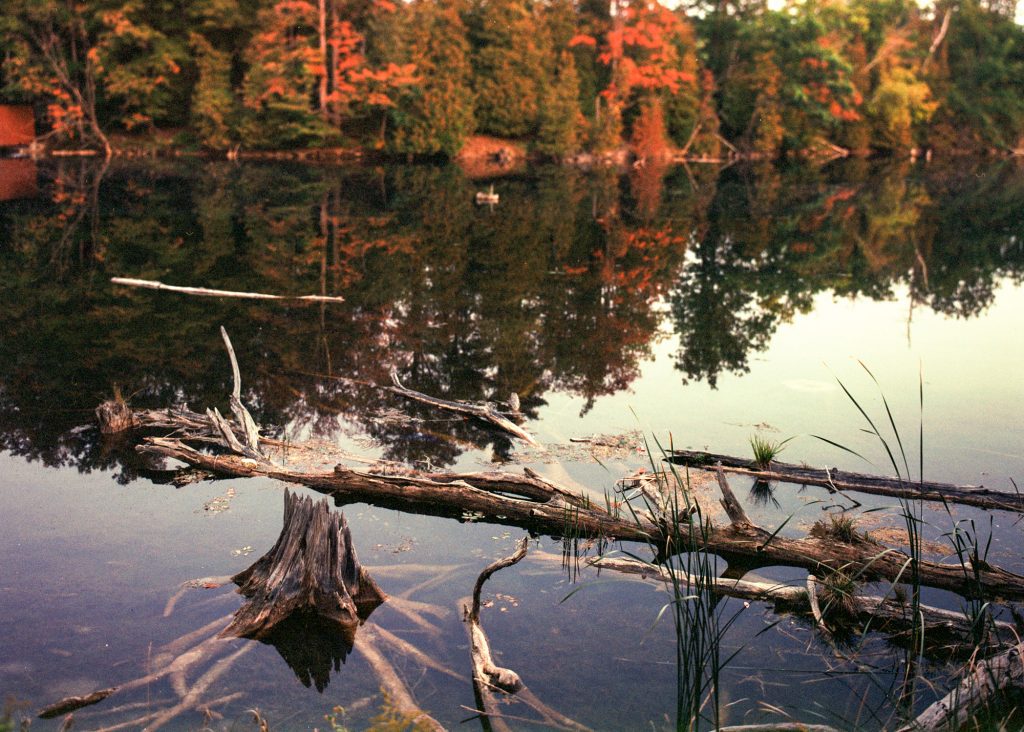
Image above shot on a Fuji GX680, on Portra 100. Developed in Unicolor C-41 kit, normal process.
1. Gear Prep Before the Leaves Drop
- Check the gear – Fall mornings can be damp and chilly, so it’s a good time to double-check your camera’s seals, carry a microfiber cloth, and maybe pack some silica gel packs in your bag. Moisture can sneak in faster than you think.
- Clothing matters – Dress in layers. You’ll often start shooting in cold morning air but warm up as the sun rises. Comfort means you’ll stay out longer and get more shots.
- Timing – The golden hours in fall are magical, but don’t overlook overcast days. Cloudy skies act like a giant softbox and can really help with those subtle colour transitions in the foliage.
- Check your light meters. Autumn light can be tricky, with fast changes between overcast skies and bursts of sun. Make sure your in-camera or handheld meter is accurate.
- Pack a sturdy tripod. Days are getting shorter, and you’ll often find yourself shooting in softer, dimmer light. A tripod lets you work at slower shutter speeds without sacrificing sharpness.
- Bring lens hoods. Low sun angles in the fall mean lens flare is more common. A hood can help control contrast and keep those deep reds and golds intact.
Image below shot on Fuji Acros (original) at EI 80 with a Hasselblad 503cx. Developed in T-Max Dev 1+4, 5m30s @20°C.
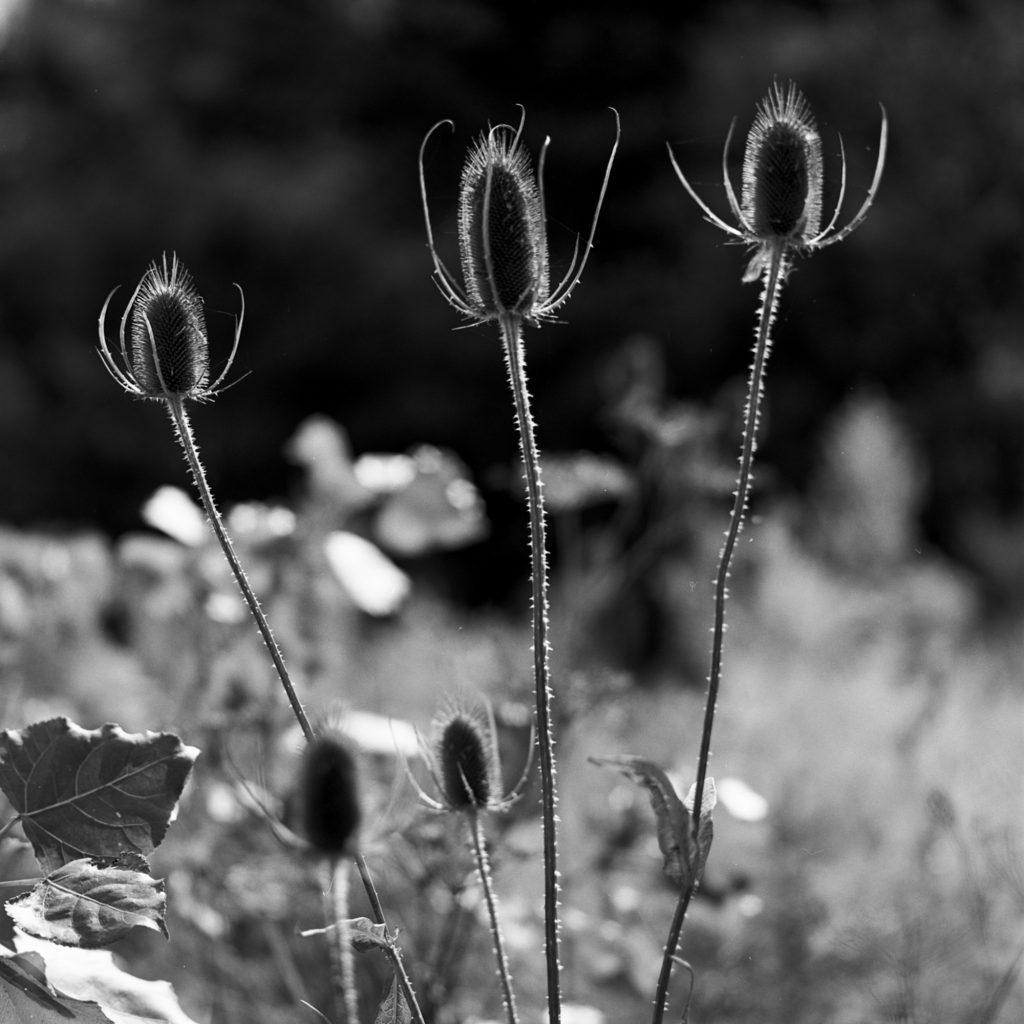
Image below shot on a Nikon F5. Ektar 100, at box speed. Developed in Unicolor C-41 Normal process.
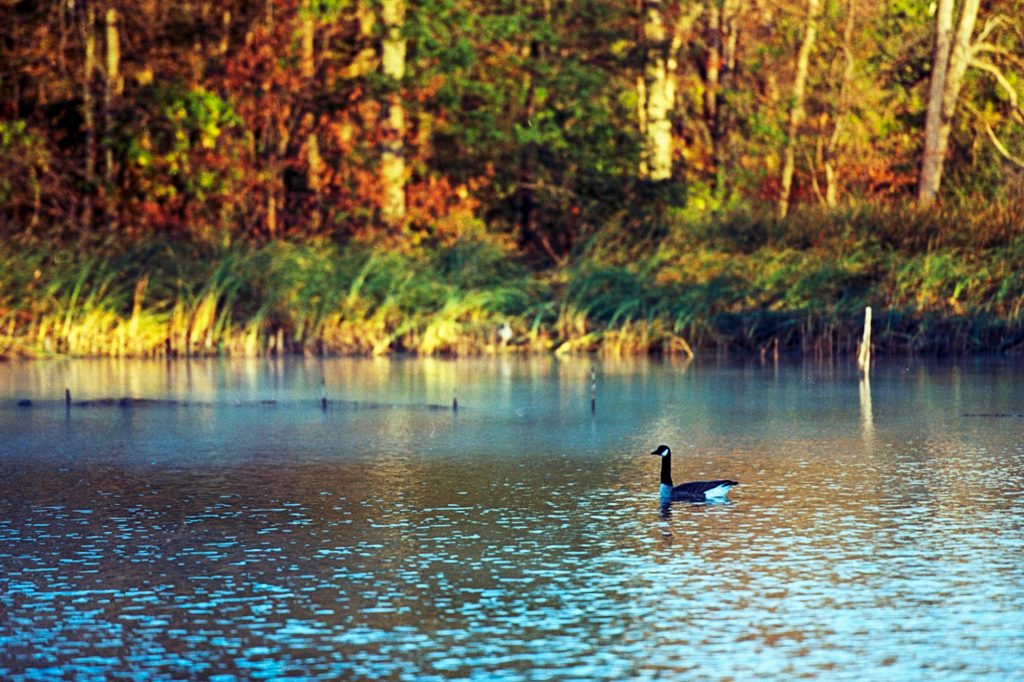
2. Exposure Tips for Fall Light
- Meter for the shadows. Fall light can be tricky — long shadows, bright highlights. If in doubt, expose a little more for the shadows; negative film can handle highlights better than it can recover deep shadows.
- Polarizing filters. On a clear day, a polarizer can help cut glare off wet leaves and deepen the sky. Just be careful — too much can look artificial.
- Depth of field play. Wide apertures are great for isolating leaves or details, while a stopped-down lens at f/11 or f/16 can help capture those sweeping forest scenes.
- Watch the wind. Fall breezes are constant. Sometimes motion blur in leaves can add atmosphere, but if you want crisp detail, be ready to bump your shutter speed.
- Embrace overexposure for colour. Many colour negative films, like Kodak Ektar 100 or Portra 400, respond beautifully to a slight overexposure—half to one stop extra can deepen foliage tones and give you richer skies.
- Meter for the shadows. With contrasty fall scenes, especially when sunlight cuts through the trees, giving priority to shadow detail ensures your negatives hold onto the mood of the scene.
- Golden hours matter. The warm, low light of early morning and late afternoon amplifies the reds and yellows in foliage, while midday can flatten tones.
3. Film Stocks That Shine in Autumn
- Kodak Ektar 100: My go-to for peak foliage. Its fine grain and vivid saturation make reds and oranges leap off the frame. Just be mindful with skin tones if people are in the shot.
- Kodak Portra 400: A versatile choice if you want softer, more balanced colour that still renders fall hues beautifully. It also handles mixed light with ease.
- Fuji Pro 400H (if you have some in the freezer): Slightly cooler tones can bring out the blues in autumn skies, contrasting nicely with warm leaves.
- Black & White Options (Ilford FP4 or Kentmere 100): Don’t overlook monochrome. Bare branches, foggy mornings, and the starkness of late fall often translate better in black and white. Look for textures and mood instead of colour.
- Ilford FP4 – Great for crisp textures like bark, fallen leaves, and stone walls.
- HP5 or Tri-X – Push them on a gloomy fall day for drama. Think bare trees against a moody sky.
Remember, autumn is as much about the tones and atmosphere as it is about colour. Black and white can give you a different, almost timeless feel.
Images below and header image, shot on Fuji Provia 100 using a Nikon F6. Developed in Unicolor E-6 Kit, normal development.
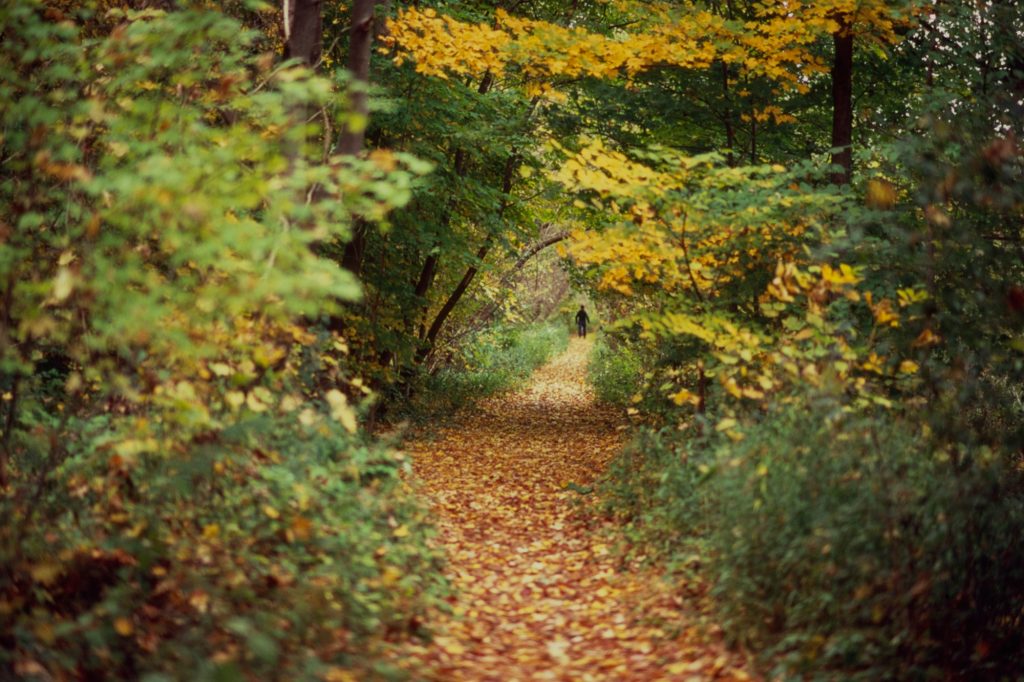
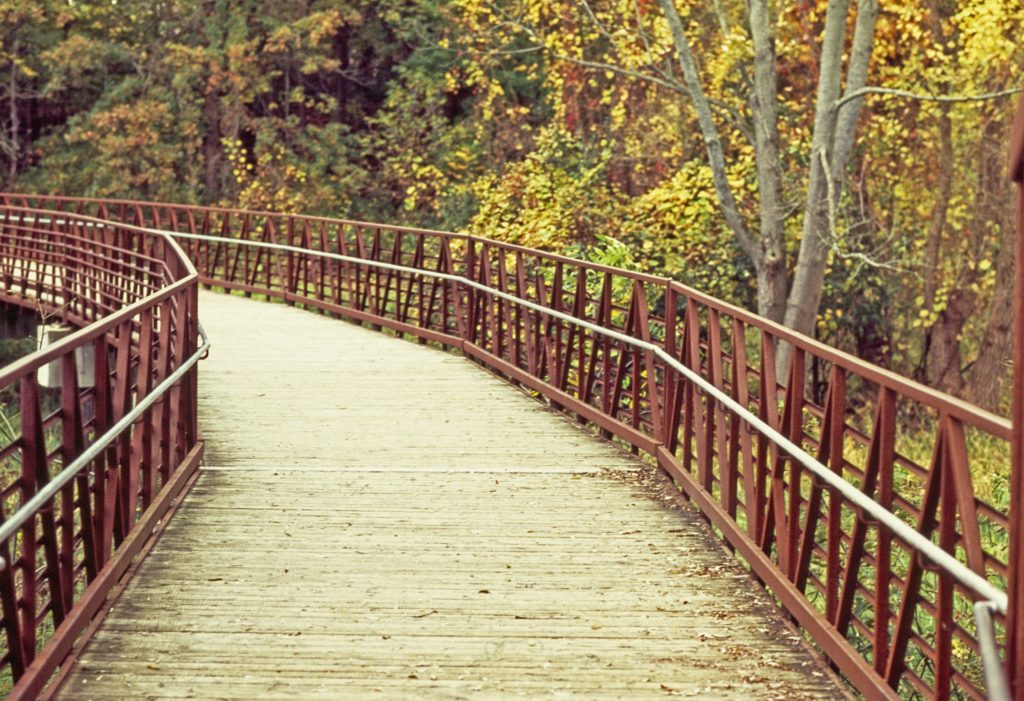
4. Compositional Ideas
One of the perks of being in the northeast is the sheer variety of landscapes. You’ve got maple forests, rolling hills, rivers, covered bridges, even small towns that look like they were built for postcards.
- Look for contrasts. Red maples against evergreen pines, or yellow leaves scattered across a dark wet road, can create natural layers of interest.
- Include water. Lakes, rivers, and even puddles act as mirrors for autumn colour. Reflections can double the drama in your frame.
- Don’t forget people. Fall is a season of activity—apple picking, hiking, cozy afternoons. Including human elements adds warmth and story to your shots.
- Wooded trails for that immersive canopy of colour.
- Open fields at sunrise or sunset for soft mist and layers of distant trees.
- Historic towns with pumpkins on doorsteps, barns, and church steeples surrounded by fiery leaves.
Don’t forget the details — fallen leaves on old stone walls, reflections in puddles, or even your morning coffee cup against a backdrop of golden foliage.
Image below shot on Fuji Pro 400H using a Pentax 67II. Developed in Unicolor C-41 Kit, normal development.
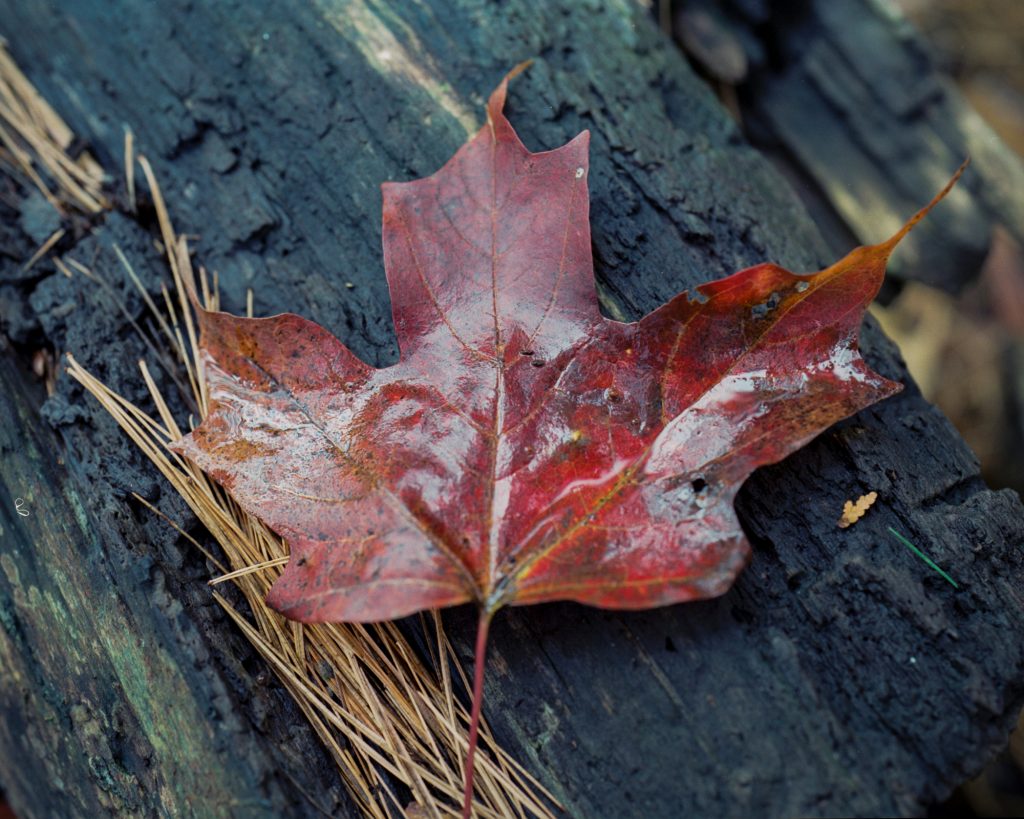
Image below, shot on Fuji Provia 100 using a Nikon F6. Developed in Unicolor E-6 Kit, normal development.
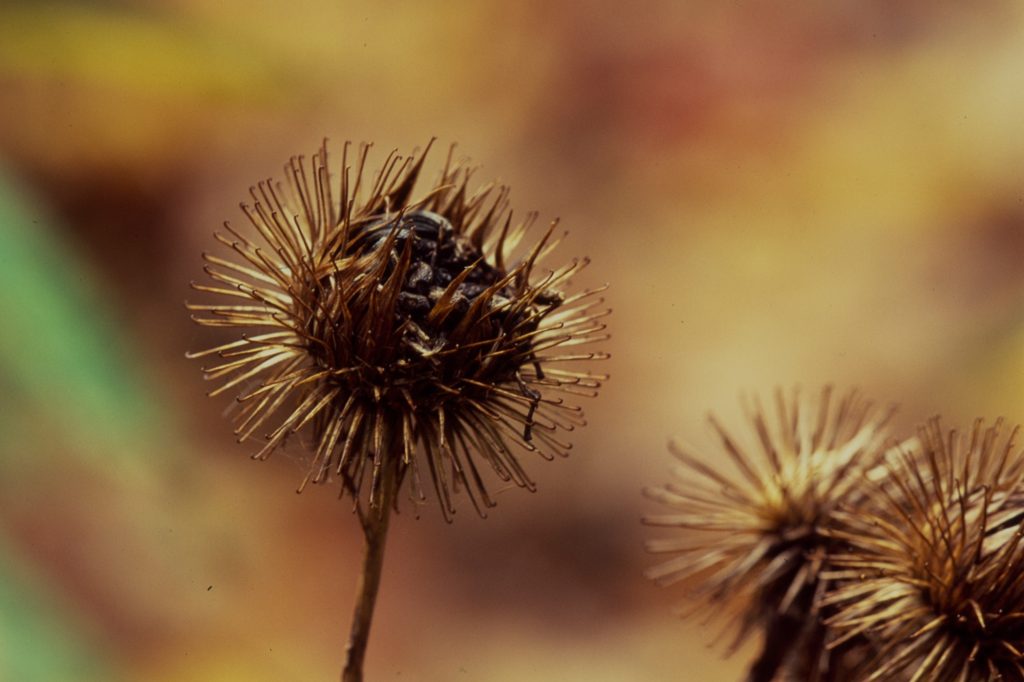
5. Final Thoughts
Fall photography is about more than just the foliage. It’s about capturing a season of transition — the slowing down, the shift in light, the texture of the air. Shooting it on film makes it even more special, because the colours, the grain, and the process itself mirror that slower, more deliberate rhythm of autumn.
Shooting film in the Northeast during fall is both rewarding and fleeting. The season shifts quickly—one storm can strip the trees overnight—so the best advice is simply to get out there often. Load your favorite stock, meter carefully, and let the season surprise you.
So pack a couple rolls, throw a thermos of coffee in your bag, and head out. Because before you know it, the leaves will be gone, and winter will have us in its grip.

